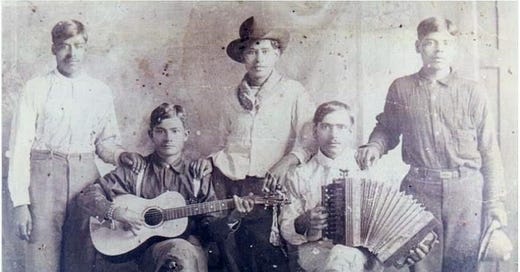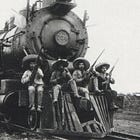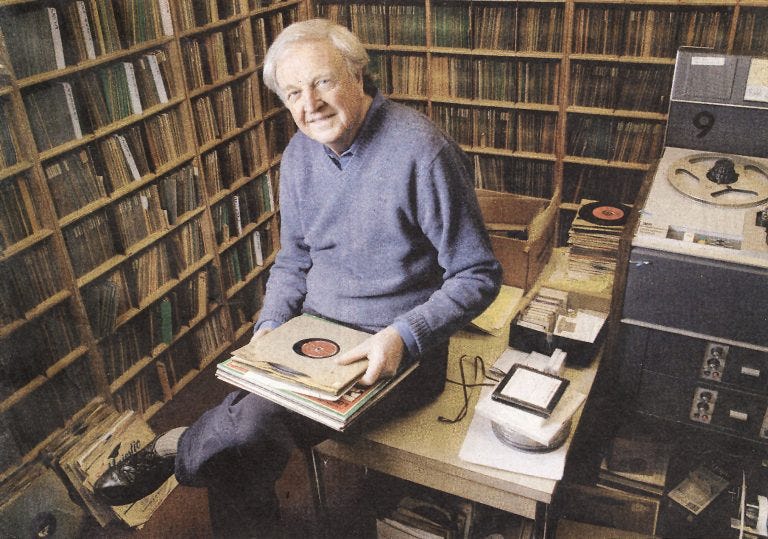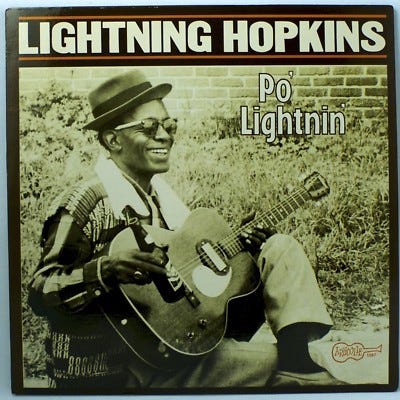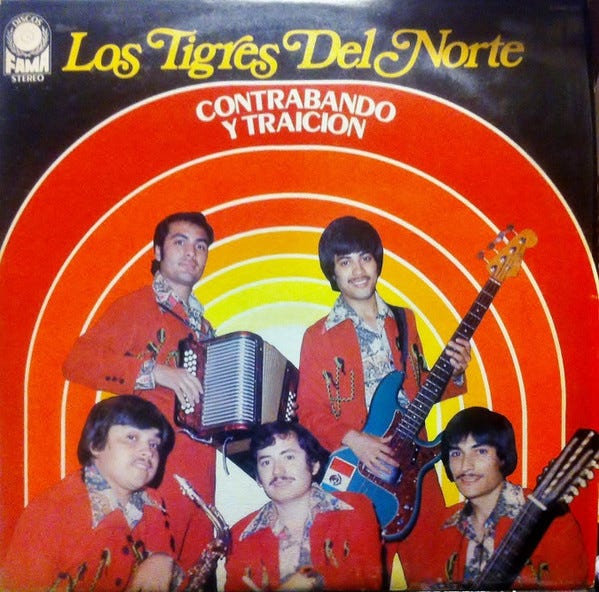My love of music is strange, and I often wonder where it came from.
There was never much music in my house growing up as a kid. My dad was tone deaf and the only time I ever heard him sing was in church. He never talked to me about music of any kind, or I should say he only did once.
It happened in the early 2000s, sometime after I moved to Minnesota from Chicago. While entertaining relatives at our house, I played the Lone Star movie soundtrack:
I’m not sure why I picked that one, other than I thought it might make good background music. The first track is Mi Unico Camino by Conjunto Bernal:
As it played, my dad walked by the speaker and stopped. After listening for about 30 seconds, he turned to me and said, “Now that’s good music.” Then, before the song even finished, he walked away. At the time, it didn’t occur to me that it was the first and would be the last time he ever shared with me any musical preference.
As the years went on, the gravity of that moment struck me. My mom often let it be known she liked Snowbird by Anne Murray and The Beatles’ Hey Jude or disliked some rock song playing on the car radio - “That’s rubbish,” she’d say. However, my dad only mentioned liking or disliking music on that one occasion. He passed away before I could confront him on his musical tastes or why exactly he shared it that day while listening to Conjunto Bernal. I felt like there had to be a story in there. So without his story, I can only guess….
My dad grew up in Palisades, Colorado, a small town near Grand Junction. After school as a kid, he picked peaches at a nearby orchard to raise money for his family. I can imagine him sitting under a peach tree during a break on some hot Colorado evening listening to the music of the migrant workers, who came up from New Mexico and South Texas. Maybe that’s where he’d heard that music?
There was some kind of draw for him to Mexico. After all, when I was a kid he drove our family in our station wagon twice from Minnesota to Mexico. Once in 1970, we drove all the way down to Mexico City. Although I was only eight years old, I still have vivid memories of the Olympic Stadium in Mexico City, going to a bullfight, getting sunburned on the beach at Mazatlán, and walking in Guadalupe at night taking in this new and fascinating culture.
The other was in 1974 when we rode the Chihuahua al Pacific Railroad through the Copper Canyon. You can read more about it here:
On that trip, we stayed in smaller towns and cities like Los Mochis, El Fuerte, and Creel. On more than one occasion, I remember walking along dark streets at night where open doors spilled bright lights and music into the street- it was like being in a movie. Hearing the music brought me peace. So, maybe that’s where he’d heard that music?
Since that time later in life when we listened to Conjunto Bernal together, I’ve been on the trail to find and listen to more Mexican-American border music, or what is known as Conjunto Tejano. During that search, interestingly what I found is that the two most influential record producers responsible for bringing this beautiful music to broader U.S. audiences were not Americans. One was German and the other British.
In the late 1980s, while I was stationed at the Presidio of Monterey, from time to time on the weekends I’d drive up to Berkeley to check out Amoeba Music on Telegraph and then head up to Down Home Music in El Cerrito. Down Home Music was established in 1976 by Arhoolie Records founder Chris Strachwitz.
Down Home Music was a brick-and-mortar retail outlet for Roots music releases from various labels throughout the world. I still remember the first album I bought there:
I can’t remember if I ever saw Chris Strachwitz at the record store. If I knew then what I know now, it would have been a real honor to meet him. Earlier this year, he passed away peacefully at his home in Marin County. He was 91 years old and had an incredible journey. Along the way, he brought so much joy to our lives and the lives of the musicians and fans with whom he shared his passion.
Chris Strachwitz was born in Berlin to an aristocratic family that lost everything at the end of World War II. His grandmother had been American and when she died, her sisters moved the family to America to live in Reno, Nevada. In 1947, he was sent to Cate School, a private school in Carpinteria, California. When he was supposed to be at soccer practice, he would stay in his room and listen to an hour-long broadcast of Mexican music. That radio program lit a spark and made him aware that this music was out there somewhere. He attended Pomona College and heard Lightning Hopkins and other “down home” blues artists on Hunter Hancock’s “Harlem Matinee” over KFVD in Los Angeles. After a short stint in the service, he attended UC Berkeley.
In the summer of 1959, he made a trip to Houston, Texas, intending to visit his hero Lightning Hopkins; however, he was unable to record him at the time due to a lack of money and equipment. The following year he returned to Texas, but this time unable to locate Hopkins, he recorded Mance Lipscomb in his living room in Navasota, Texas. That recording became the first album on Strachwitz’s legendary record label Arhoolie, which he launched in 1960 from his small rented house while in Los Gatos, where he taught high school.
In the early 1970s, composer and activist Rumel Fuentes introduced him to Mexican narrative ballads called corridos. He quickly became enamored of Tejano and norteño and other regional Mexican and Mexican-American music. In 1976 he traveled to South Texas with filmmaker Les Blank and a young Ry Cooder to record the original giants of Tejano music in what became the documentary film Chulas Fronteras (Beautiful Borders).
In 1992, Arhoolie Records released the CD Mi Unico Camino by the Conjunto Bernal. The tracks were re-issues of old 78rpm records he had collected over the years. One of the songs is the ranchera Mujer Paseada, recorded in 1955 for the Ideal record label. It was Conjunto Bernal’s first record:
Conjunto Bernal was formed in the early 1950s by Paulino and Eloy Bernal, two teenage boys from a poor farmworker family in Kingsville, South Texas. They are now recognized as one of the most influential and innovative groups in the history of Mexican-American music. In 1952, when they were 13 and 15 years old, they launched their musical career as Los Hermanitos Bernal and started playing gigs in Premont, Texas. After they became popular, they changed their name to Conjunto Bernal. From 1955 to 1960, they recorded prolifically for Ideal before moving to McAllen, Texas to start their own label Bego Records, which later became Bernal Records.
Strachwitz's fascination with Mexican and Mexican-American music eventually grew into the Frontera Collection, and the cornerstone of the Frontera Collection is the corrido. In its simplest definition, the corrido is a ballad or narrative song. Although its roots date back centuries to Spain, the music is considered quintessential Mexican, and relatively modern. According to the Arhoolie Foundation’s book Strachwitz Frontera Collection of Mexican and Mexican-American Recordings, “From the late nineteenth century through present day, corridistas have documented the actions and exploits of the famous, the infamous, and the anonymous everyman. Like newspapers for the literate classes, the corrido is a first draft of history, but in this case, written by and for society’s downtrodden and dispossessed.”
For example, Contrabando y Traicion is considered one of the original tunes that launched the narcocorrido craze of recent decades - it tells the story of a female smuggler who kills her cheating partner and makes off with the bounty. This version of the song was recorded in 1975 by Armonia del Norte:
The story behind this corrido kind of reminds me of the Steve Miller Band’s Take The Money And Run - an American corrido of sorts.
In 1974, Los Tigres del Notre made this song famous on their album of the same name:
This was Los Tigres del Norte’s fourth album and launched their career. It was released on the Fama label, based out of San Jose, California. Fama Records was one of the most prominent Regional Mexican labels in the United States in the 1970s and 1980s. It was founded in 1968 by Arthur Walker, a British-born record distributor. Walker recorded Los Tigres eight times over sixteen years, helping to make Fama one of the most important Mexican labels on the West Coast in the 1970s.
Los Tigres del Notre’s story begins in a small settlement or ranchos named Rosa Morada located southeast of Los Mochis, Mexico. Los Mochis was the western terminus of the Ferrocarril Chihuahua al Pacífico, which crossed the Copper Canyon and was originally a railway trade route between the cattle markets of Kansas City and the Pacific. Despite that, In 1954, life seemed to bypass Rosa Morada. Now, Rosa Morada is famous for the three Hernández brothers (Jorge, Hernán, and Raúl) and their cousin (Oscar) who went on to form Los Tigres del Norte.
In 1954, the oldest brother recalls his grandmother bringing home a Philco radio. It was the only electronic contraption in town and no one knew how to use it. It managed to pull in just one radio station, and it wasn’t even in Mexico. It was the 150,000-watt station from Harlingen, Texas, which played only pure norteño music – also known as “música de acordeón.”
As it turned out, one of the brothers made regular visits to the telegraph office in Mexicali. By chance, the telegraph worker also booked acts across Baja California. One day he told the boy of an opportunity to perform in the United States. A promoter in San Jose had put the word out that California state authorities were looking for Spanish-language acts to perform for Mexican inmates at the prison in Soledad. It wasn’t a paying gig, but it would give them exposure. The brothers were hired. While filing for a ninety-day visa, a US immigration agent asked the group what they were called. But the boys had no name. The agent thought these boys had a lot of spunk and reminded him of “little tigers.” And since they were headed north, he called them Los Tigres del Norte - Tigers of the North.
After the Soledad performance, they headed to San Jose, where they met photographer Richard Diaz who told them Art Walker wanted to meet them. Walker took them to Fresno and recorded their first record De un Rancho a Otro and released it on his Fama label:
Truth be told, I’m not a huge Los Tigres fan, but they are an important group in the development of Mexican-American music. I was always drawn more to traditional sounds from the earlier 78-rpm labels like Falcon, Ideal, Corona, and Del Valle.
For example, composed by the famous corridista, Manuel C. Valdez, here’s the classic corrido Carga Blanca, which deals with cocaine smuggling. This version was recorded by Valdez and released on the San Antonio-based Corona label:
This corrido represents one of the first transitions from alcohol smuggling to drug smuggling, illuminating the dangers of drug smuggling and even deterring members of the Mexican community from taking part in it. Carga Blanca set the stage for future narcocorridos, although some of the subsequent ballads actually glorify drug smuggling.
I also like Toni Aguilar’s La Chuyita. I heard this song right before a ZZ Top concert. They came to the James J. Hill Days concert in Wayzata, Minnesota, a suburb of Minneapolis. While ZZ Top was setting up, random songs played over the PA. Once the lights dimmed for the main event, the last song they played was Aguilar’s La Chuyita:
Here’s one more for the road. Ry Cooder’s soundtrack to Wim Wenders and Sam Shepherd’s film Paris, Texas is incredible. One of my favorite songs is the classic Mexican folk song Canción Mixteca. José López Alavez wrote the melody in 1912 and composed the lyrics in 1915. In the film version, Harry Dean Staton sings the vocals. You can hear him talk about this song here. From the soundtrack, released in 1985, here’s Canción Mixteca (If you go here, which I think is better, you can watch the video along with the music):
In 1984, when I was in the Army at Fort Sill, Paris, Texas came out in theaters. It made an impact and inspired me to make the 4-hour drive from Lawton, Oklahoma to Paris, Texas. On the way, you pass through Wichita Falls and Nocona, where I bought my first pair of cowboy boots. The factory now makes baseball gloves.
When I say the film, although I didn’t know it at the time, Canción Mixteca opened up the music hidden deep inside of me. It rekindled the music I heard as a boy holding my father’s hand walking around El Fuerte and Guadalupe as the setting sun changed the sky from deep blue to orange.
The film also introduced me to Conjunto Tejano and Conjunto Norteño - the border music of northern Mexico and southern Texas - the music that years later my dad and I were listening to when he shared with me his only musical preference.
Next week, on that Big River called Jazz, we’ll portage our canoes and relax for the holidays. Then we’ll get back in the water and dig our paddles in to explore the world of Donald Garrett and Kali Fasteau’s The Sea Ensemble.
Please hit this link to buy me a cup of coffee, if you’d like to show your guide some appreciation for this and past journeys. Know in advance that I thank you for your kindness and support.
If you like what you’ve been reading and hearing so far on our journey and would like to share this with someone you think might be interested in learning more about our great American art form: Jazz, just hit the “Share” button.
From Astaire to Sun Ra: A Jazz Journey is a reader-supported publication. If you feel inclined, subscribe to my journey by hitting the “Subscribe now” button.
Also, find my playlist on Spotify: From Fred Astaire to Sun Ra.
Feel free to contact me at any time to talk shop. I welcome and encourage that.
Until then, keep on walking….

